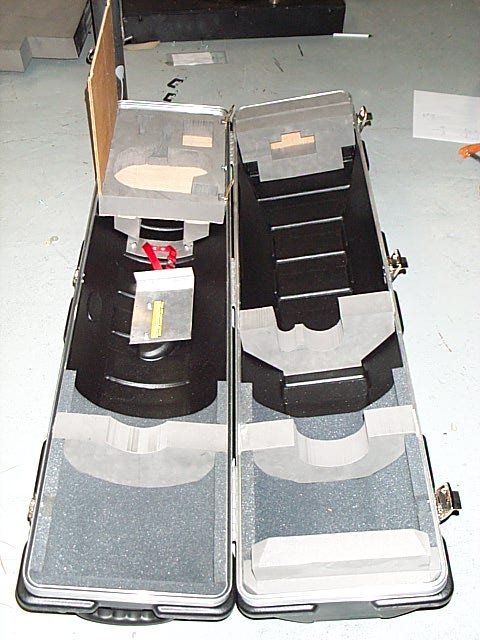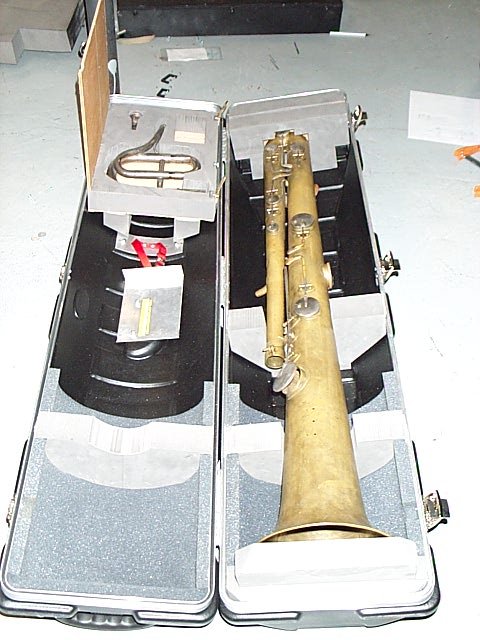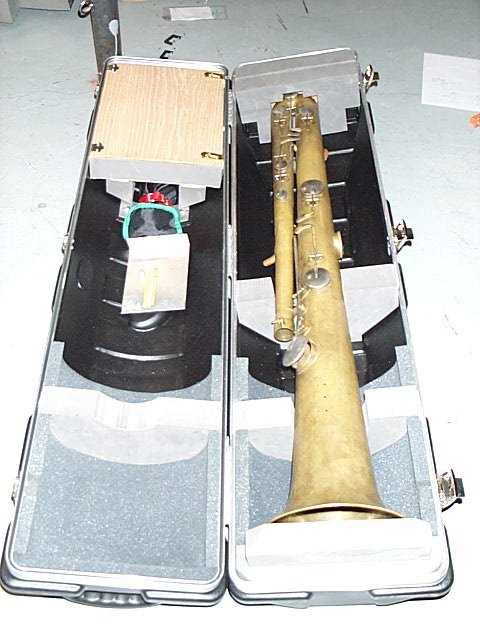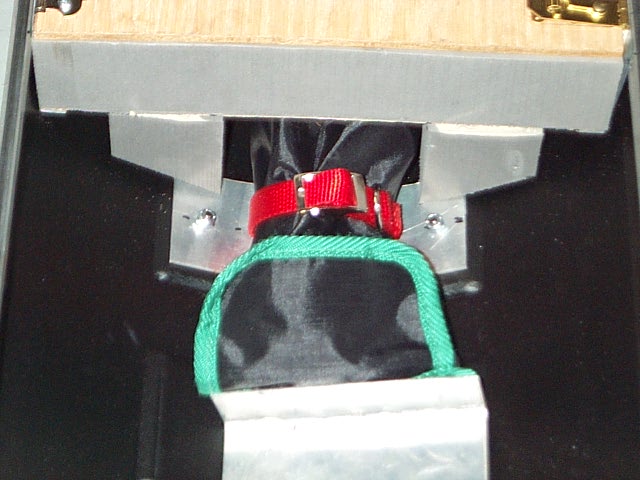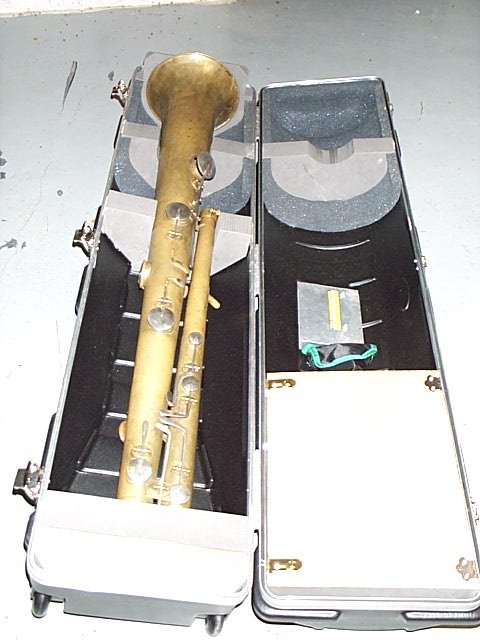Here is one more view of the completed case.
An ophicleide is an expensive and relatively
rare instrument. This makes it a precious object, and this is compounded
by its fragile construction. The author designed this case and used the
best materials available with the intention of producing a virtually indestructible
yet lightweight case that would protect its precious contents through the
roughest survivable handling likely to be encountered in travel. With all
this said, transport of your ophicleide is your responsibility, and neither
the author, the Serpent Newsletter or the Serpent Website make any
guarantee that a case built along these lines will be suitable for your
travel situation.
All photos made using a Kodak DC240 digital
camera.
Afterthoughts:
1) Place a washcloth flat inside the bocal box,
between the lid and the foam, to further pad the bocal and mouthpiece.
The cloth can double as a rag to wipe the mouthpiece.
2) Place a permanent label with your name and
phone number inside the case.
